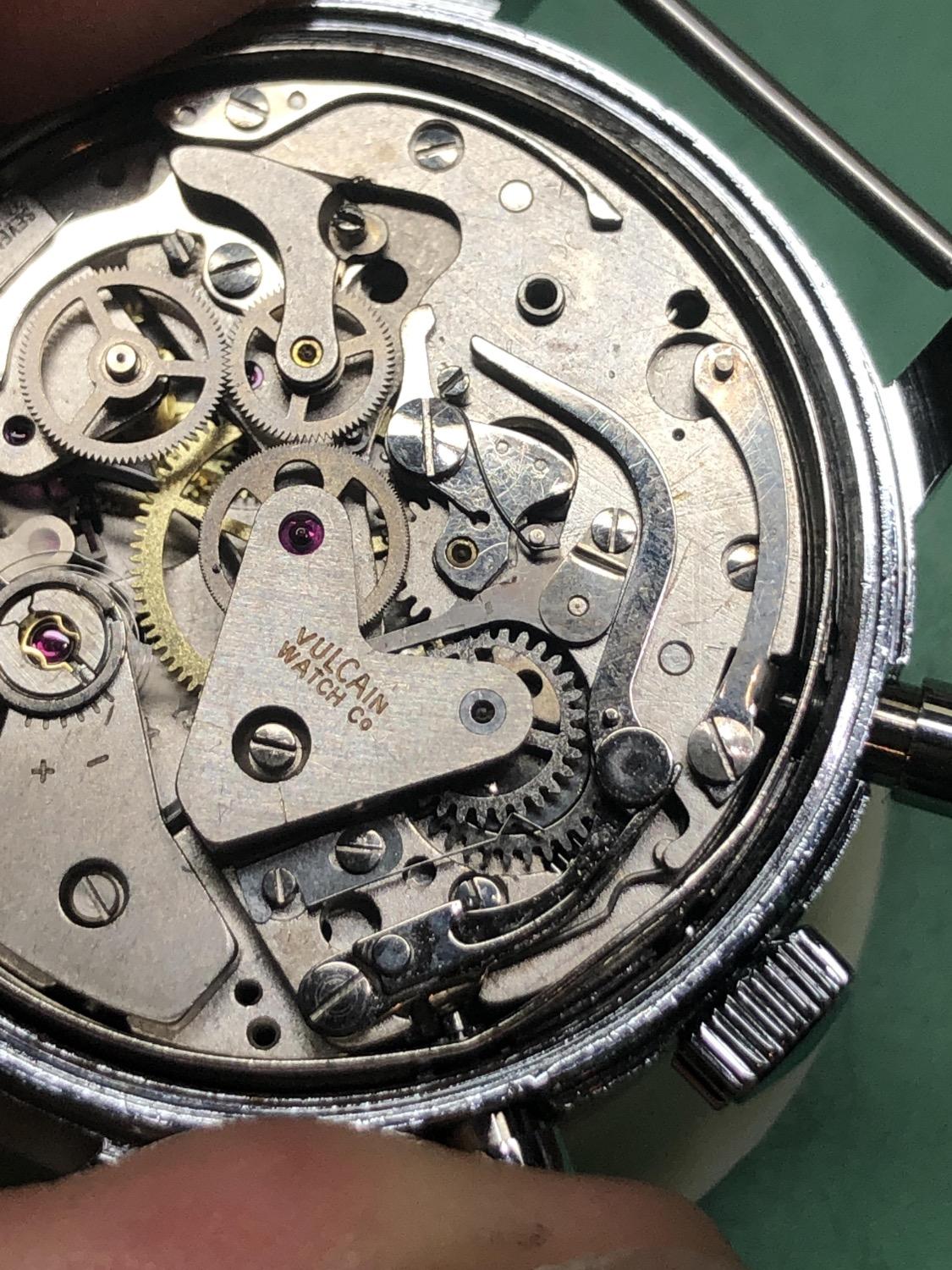Venus 178 Breitling Navitimer
-
Similar Content
-
Recently Browsing
- No registered users viewing this page.
-
Topics
-
Posts
-
Where I work everything incoming watches whatever detailed descriptions are taken entered into a computer program and photograph of each item. Then ideally although it depends on who's doing the paperwork detailed descriptions can be quite good other times there lacking. Like I really like it with pocket watches if they would record the serial number it avoids confusion later on. Then when watch repairs are completed that is also entered in. It's one of the amusements I learned when I was in school instructor had a shop and commented about the important aspect of keeping detailed records of repairs. Because oftentimes a customer who got a new crystal will come back later on when the watch doesn't work and expect you to fix the entire watch for free. Then you can remind them that they just got a crystal. Strangely enough that keeps coming up or occasionally comes up where I work now. One of the problems of using the service marks on the case is that in the case of pocket watches oftentimes that's not the original case. Then case marks? What I was doing warranty work for a company I used to describe a code number in the back of the case and it would tell me the next time I see the watch that basically what I did I made no attempt at keeping track of customers because we had literally thousands of them I think they sold 30,000 of these watches and they would come back by the hundreds because they had a lifetime warranty. Yes that's a story all of itself but I would put a code number that would reference what was done to the watch the last time and think I had a date in there somehow so it did tell a story if you knew the code. Another shop I once worked out the number would reference the page in the book. So other than knowing we had been in there you would have no idea what happened because you have to go look at the page in the book to see what happened. Then the problem of how you examine a watch you should examine the watch in detail every single time to avoid complications. Although on vintage watches and this is a of amusement I have at work when people ask something and I say of the watches done when it leaves. This is because on vintage oftentimes problems won't show up until the watches much farther into the repair like it's now running and you discover things that you can't discover before because it wasn't running to discover them that also become sometimes difficult to have exact rigid prices are estimates of repairs or in the case of a pocket watch you may not find out if a casing problem to later on when you case it up in the watches running. I was just thinking for all those people that would like to leave a mark maybe you should learn to do what some of the past watchmakers did? Leave a mark but leave it in such a way that no one will ever find it? Typically not done for repair purposes but done for other reasons like identifying it's legit. I have a friend with a Gruen watch and one of the Roman numbers the bottom line that just looks like a line under extreme magnification actually says Gruen watch company or something equivalent. So here's a link showing how to mark your watch without being seen although that's not the actual title. So if you can learn micro engraving you can engrave the watch someplace probably just about any place you just have to remember where you put it. https://cnaluxury.channelnewsasia.com/obsessions/how-to-prove-if-watches-are-authentic-secret-signatures-182516
-
I have acquired a Citizen Leopard 36000 watch. My reason for purchasing it was my desire to own a timepiece with a 36,000 BPH movement, and the price was reasonable. Another motivating factor was gaining hands-on experience with the mechanism. The watch is in good condition, but I intend to fully disassemble it for maintenance. First and foremost, if anyone has prior experience with this particular model, I would greatly appreciate their insights. I do not have access to Citizen’s specialized lubricants and will need to use the ones available to me, such as 9010, 8000, and 8300 grease. Additionally, I do not possess the appropriate oil for the pallet jewels and will only be able to clean them.
-
Hello all, I am working on an older Valjoux Chrono. It doesn't have a stamp on the movement anywhere but I believe it is a Valjoux 72. I installed the train of wheels and they will not turn. The problem appears to be the 4th wheel and the escape wheel are not interfacing correctly. I had to replace both of these parts as the pivots were broken on each. I sourced genuine Valjoux/ETA replacements. I think the problem is with the escape wheel as all the wheels turn perfectly if I remove just the escape wheel. My question to those with more Valjoux experience is am I mistaken? Is this some other model altogether and I have the wrong part or parts?
-
By RichardHarris123 · Posted
I would remove the wheels, check for damage and if not damaged, clean. -
Thanks for the replies! Here's a photo of the front of the clock and a GIF animation of the movement (exposed by removing the black cap in the centre of the clock). You can see the behaviour of the gears. It's a fairly valuable clock from the 80s (Braun ABW 35). I'm not sure if replacing the movement would diminish the value, so I'd prefer to keep the original parts if it's easy to fix. But since the movement itself is pretty generic, I guess, maybe replacing it wouldn't make any difference with regard to the value of the clock? Or would it? I suppose the value is mostly in the design.
-






Recommended Posts